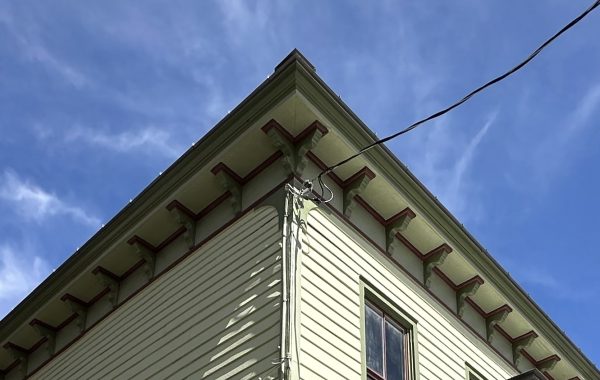Surely there’s a word for the critique of a critique? In any case, the following is my commentary on Kate Wagner’s “The Archivists of Extinction,” published in The Baffler. Her article is long and contains a lot of interesting ideas, so I’m only going to focus on the one that interests me the most, which is the meaning of preservation. I’m going to work my way around to that topic sideways…
The building in the picture above is the post office I grew up with, on Main Street in Flushing. It was constructed in the early 1930s, long after the American Renaissance classical revival had run out of steam, and that lack of passion shows. It’s paint-by-numbers classical-lite, which somehow made it onto the National Register. That part of Flushing, south of the intersection of Kissena Boulevard and Main Street, is short on monuments and monumental architecture, so the post office attracts attention simply because it’s big and not an apartment house. In downtown Flushing, as in Manhattan, a building can draw attention to itself by being not tall. What’s a more accurate representation of my experience of living there, from the mid-1960s until 1982? Maybe my elementary school:
The big glass tower wasn’t there back then, but the school looks much the same. A big brick box with some vaguely ornamental trim. (There’s a style referred to as “stripped classical.” This is what happens when you strip off too much.) But the exterior, while familiar from memory, isn’t how I think of PS20. The endless interior hallways, high-ceilinged and painted in two-tone green are more important to me, as are the classrooms with their wood closet doors and tall windows covered with steel netting inside and out.
Here’s the ultimate in 1970s Flushing kitsch: the Korvette’s department store that was constructed when I was about ten and went out of business when I was 16 or 17:
That’s soulless 1970s design at its peak. The odd triangular plaza in front was created by aligning the windowless front wall of the store to the street grid three blocks away rather than street directly in front of it. In my experience, that plaza never held anything but wind-blown trash and smokers.
There’s a purpose to this trip down my memory lane. One of these buildings is a national (but not local) landmark, one is an active but undistinguished municipal building, and one is a cheap modern commercial building. They are some of the personal landmarks I have from growing up in the area. The remainder of my personal landmarks are even less architecturally interesting: brick-box apartment houses where we lived and where my friends lived, and small ordinary stores. The library I went to, in the same bland vaguely classical style as PS20, was demolished in the 90s for a bigger, arguably better library building. The movie theaters are both demolished.
If preservation begins with cultural heritage, what happens when the heritage is both forgettable and forgotten? Wagner begins her piece talking about people who are commemorating K-Marts that are being closed or demolished. These people are not misguided, but rather are doing exactly what we want them to do: they are preserving the memory of those portions of the built environment that matter to them. Preservation can’t make the past better than it was, so if we create only mediocre and disposable buildings, that’s what we will preserve.





You must be logged in to post a comment.